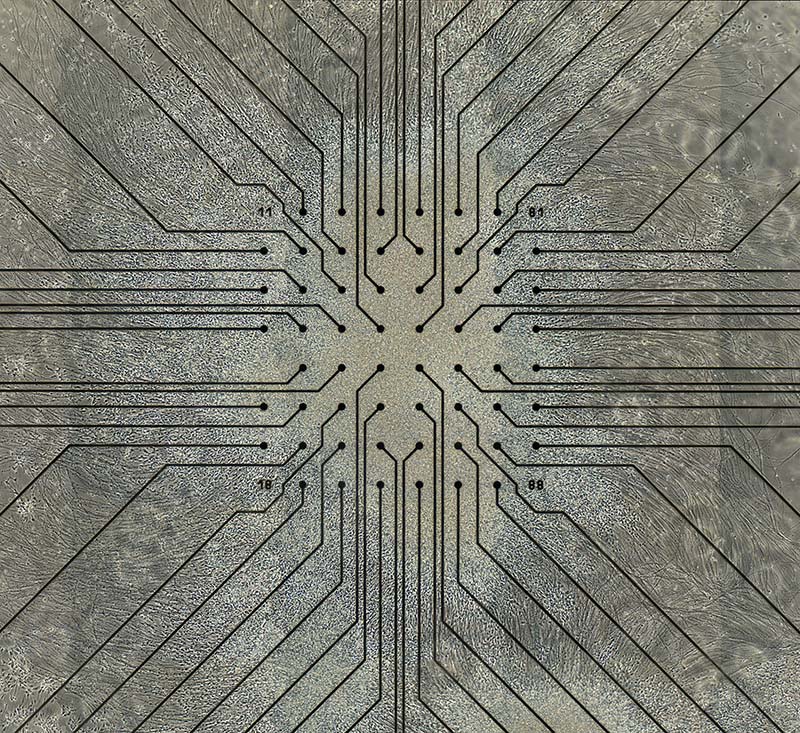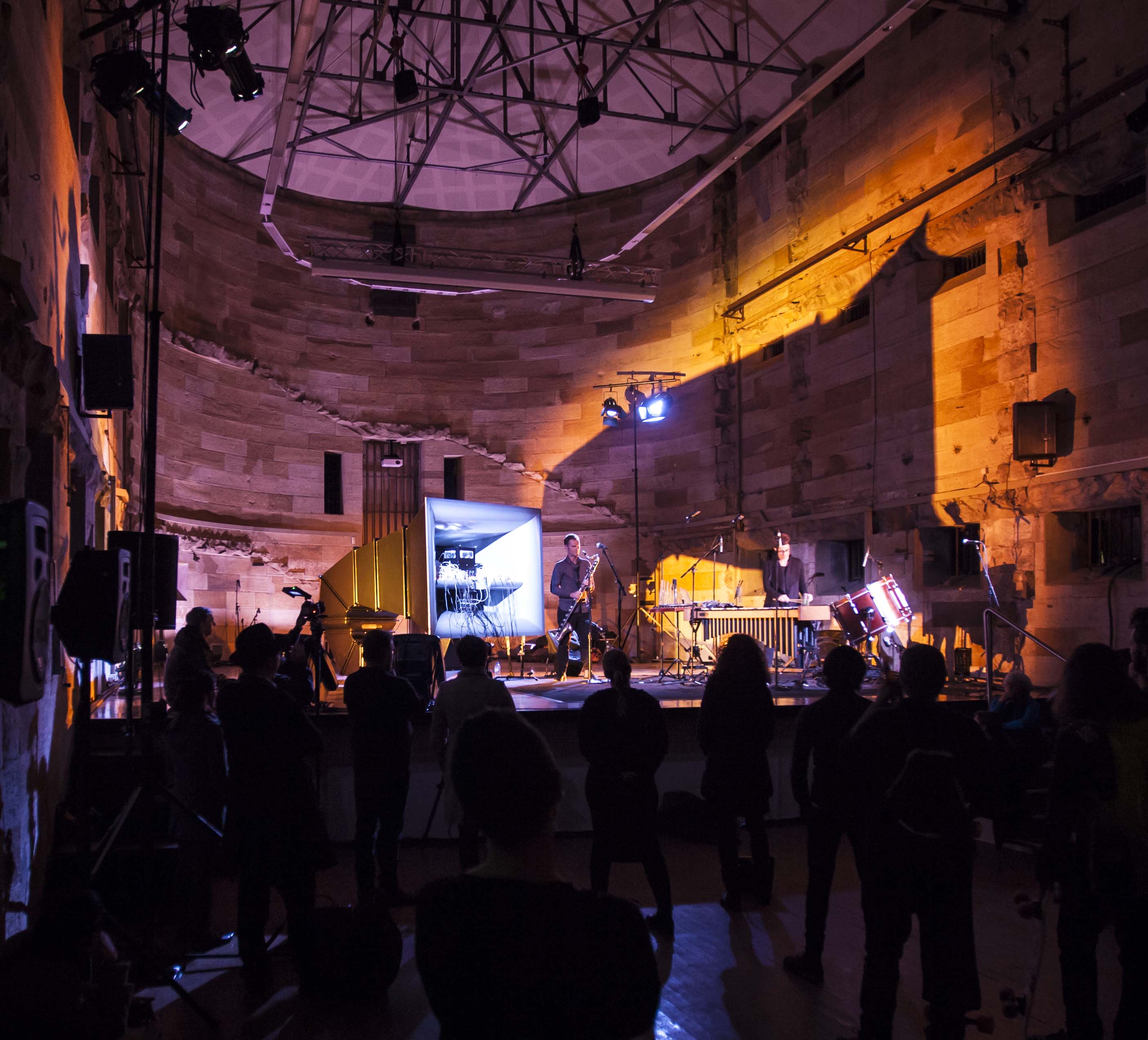Before we dive into the development of our IDEATE project we should first define and explain the terms – ‘In-Vitro intelligence’ and ‘Surrogate Performer’.
This post will focus on ‘In-Vitro intelligence’ using our past work cellF as an example.
cellF is a collaborative project in the field of experimental art, sound and performance art that we produced in 2016. It brought together artists, musicians, and scientists to create the world’s first biological neuron-driven analogue modular synthesizer. cellF combines biological material with electronic circuitry, presenting a new direction in sound performance and production.

galerija kapelica
ljubljana
cellF’s “brain” is made of biological neural networks that grow in a Petri dish and control in real time an array of analogue modular synthesizers that were custom made to work in synergy with the neural network. It is a completely autonomous, wet and analogue instrument.
The biological neural networks grow over a Multi-Electrode Array (MEA) dish to become an “external brain”. These MEA dishes consist of a grid of 8×8 electrodes. These electrodes can record the electric signals (action potentials) that the neurons produce and at the same time send stimulations to the neurons – essentially a read-and-write interface to the “brain”. Human musicians are invited to play with cellF in special one-off shows. The human-made music is fed to the neurons as stimulation and the neurons respond by controlling the analogue synthesizers, and together they perform live, reflexive and improvised sound pieces or “jam sessions” that are not entirely human.

cellF represents an interesting and provocative move away from Artificial Intelligence (AI) enquiries that dominate our current technology-focused scientific discourse. It is not an AI musical robot driven by computer algorithms; at the same time, it lacks the complexity of natural intelligence and requires a hardware body to provide stimulation for its in-vitro ‘brain’. As described above, cellF’s brain is made of bioengineered living human neurons that are grown into neural networks, interfaced such that inputs to and outputs from the networks control an array of analogue modular synthesizers, making it a wetware-hardware hybrid. ‘Wetware’ refers to the networks of neurons and other cell types that form the control systems of biological life. It is the basis of natural intelligence, which is contrasted with AI.
Neither an artificial intelligence nor a natural intelligence, cellF falls within a taxonomic void. In the absence of terminology that adequately accounts for cellF’s autonomy and plasticity, demonstrated through its capacity to make music and duet with a human musician, cellF is best understood as an entity possessing ‘in-vitro intelligence’: an intelligent system produced by bioengineered living neural networks that function as brains outside of the body. We grant that cellF represents a very early form of in-vitro intelligence, symbolic in a way, yet the characteristics of its neural network suggest that it, or others like it, may demonstrate changes in functional plasticity, just as naturally intelligent entities do.

Neuroscientist Steve Potter claims it is inevitable that neural-synthetic hybrid entities will grow more sophisticated and find widespread applications: ‘hybrid wetware-hardware intelligent things will someday be as common and as useful as digital computers are today’ (Potter, 2017; Bakkum et al. 2004). As a wetware-hardware hybrid, cellF suggests just such an outcome, and we theorize its existence by developing a description for this phenomenon as the emergence of in-vitro intelligence.

